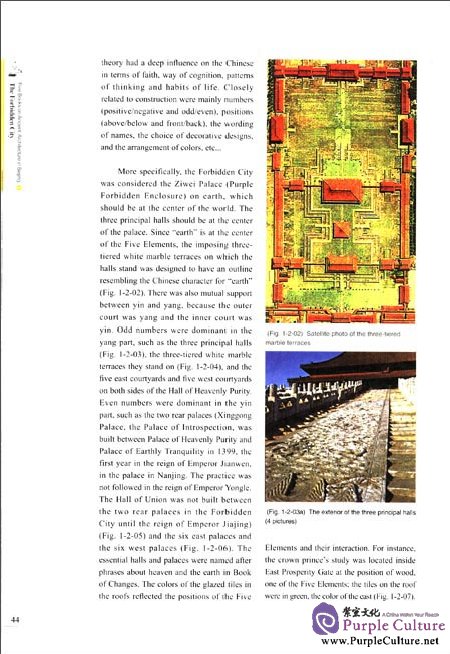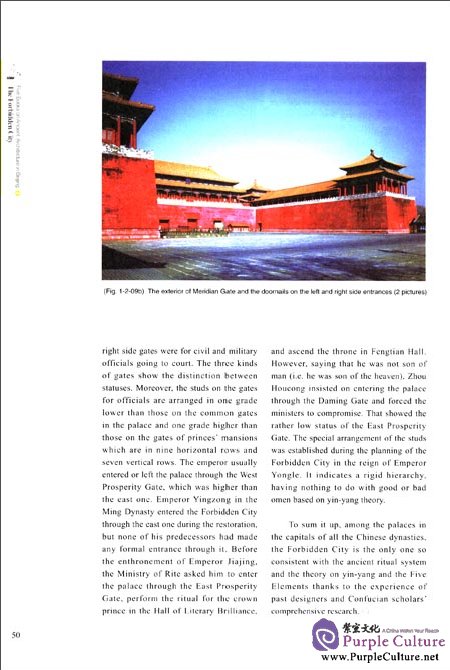Sample Pages Preview


According to the chapter oncraftsmanship in The Rites of Zhou, "Inan architect's design of a capital, the sidelength of the plan is nine li. There arethree gates, nine north-south streets andnine east-west streets. The ruler's ancestraltemple is on the left and the altar of landand grain is on the right; in the front isthe place for holding court, and behindthem is the marketplace, both being onefu [100 paces, about 140 meters] square."The measurements of the capital and thelayout of the streets do not have muchto do with the imperial palace, while thetemple and the altar are simply parts of thecapital. It was not until Zhu Yuanzhang'sconstruction of Fengyang that they wereset close to the Meridian Gate.
What are "the three courts and fivegates"? We are at much more liberty todiscuss this than the nlinisters who did itbefore Zhu Yuanzhang, and we rely ondifferent data. Let's take a look at the recordin The Yongle Encyclopedia compiled in thereign of Emperor Yongle. The encyclopediawas designed to be a complete collection ofthe classics and books on history, literature,philosophy, astronomy, geography, yinyang theory, medicine, divination,Buddhism, Taoism and crafts. The entriesare indexed with a phonic system designedin tlle reign of Emperor Hongwu. Theencyclopedia consisted of a main part anda supplementary part. The former was lost,and the latter were re-copied in the reignof Emperor Jiajing. More and more of thebook was lost due to poor preservation afterthe reign of Emperor Qianlong in the QingDynasty, until most of what was left wasburned during the invasion of Beijing by theAllied Forces of the Eight Powers while therest was scattered. More than eight hundredof the original 22,877 volumes remaintoday. Will the currently available historicaldata provide clues as to the learned Mingofficials' understanding of the institution of"the three courts and five gates"?
As the table of contents of The YongleEncyclopedia shows, gates are discussed from Volume 3,518 to Volume 3,524,including palace gates in the Zhou andQin Dynasties, the Palace gates from theHan Dynasty to the Sui Dynasty, those of the Tang Dynasty, those of the Song, Liao,Jin and Yuan Dynasties, those of the Ming Dynasty, gates of the states, gates of temples and shrines, capital gates from the Zhou Dynasty to the Wei Dynasty, capital gates from the Jin Dynasty to the Yuan and Ming Dynasties, and city gates. Rules on paying respects to the emperor are discussed from Volmne 17,464 to Volume 17,466, including such rules from the Han Dynasty to the Five Dynasties and those in the Song, Liao, Yuan and Ming Dynasties. Unfortunately, all ofthese volumes have been lost except Volumes3,518 and 3,519, which were donated to the state by their discoverer Sun Hongji from Laizhou, Shandong in 1983. Nevertheless,it is clear that early Ming scholars had anintimate and systematic knowledge of the rules on gates and paying respects to the emperor of the previous dynasties.

